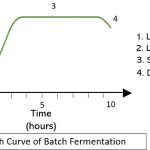Batch and continuous fermentation are the two prominent industrial processes. These are generally utilized to produce specific metabolic components, but they vary greatly depending on nutrient supply, types of system, product quantity and quality etc. Batch fermentation refers to the generation of the desired metabolite in small batches. It is a closed system, and thus the … [Read more...] about Difference Between Batch and Continuous Fermentation
Microbiology
Difference Between Sterilization and Disinfection
Following the covid eruption, you may have come across the terms disinfection, sterilization, and even sanitisation at regular intervals. All of these phrases refer to antimicrobial procedures aimed at eradicating pathogenic microorganisms and other infectious agents. Disinfection is a common and simple method of decontamination that we employ on a daily base. On the other … [Read more...] about Difference Between Sterilization and Disinfection
Difference Between Lytic and Lysogenic Phase
The main difference between the two life cycles followed by the phage during the infection to the bacterium is that in the lytic phase the phage infects the machinery of the cell to make more of its components, and later they lyse, or destroy, the cell, and releases new phage particles. However, in the lysogenic phase, the phage does not destroy the host cell; instead, they … [Read more...] about Difference Between Lytic and Lysogenic Phase
Difference Between Binary Fission and Budding
Binary fission is seen in algae and in few protozoans where there is the division of the nucleus of the cell in the cyst (protective covering), and further, the cyst breaks, and two new offsprings are released. Budding is another kind of asexual reproduction, where a bulb-like projection occurs from the parent body called the bud, which gets detached and forms a new individual. … [Read more...] about Difference Between Binary Fission and Budding
Difference Between Binary and Multiple Fission
Both types of fission are the types of asexual reproduction, in which the binary fission give rise to two daughter cell from the parent cell, whereas in multiple fission, the parent cell gives rise to numerous daughter cell. Binary fission is one of the most common methods of reproduction in the prokaryotes, while multiple fission occurs in some parasitic species and … [Read more...] about Difference Between Binary and Multiple Fission



